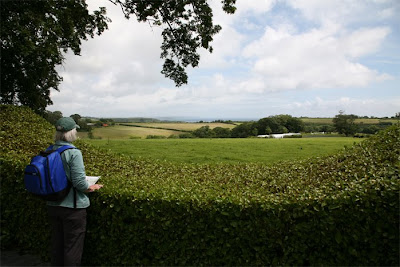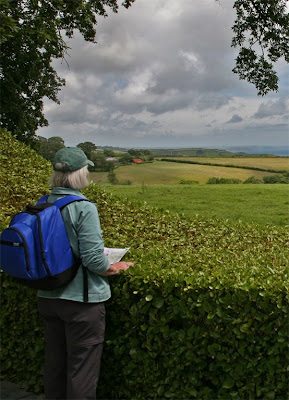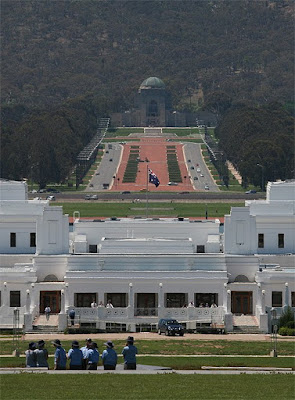This exercise requires us to photograph a number of subjects in the vertical (portrait) format and then re shoot the same in the horizontal (landscape) format. I shot the following photographs within a 5 block square in central New York. I have grouped the images in pair so that it is easier to compare the two formats.

Burger Boy |. 1/160, f4.5. ISO400, 105mm
Burger Boy _. 1/160, f5.6, ISO400, 84mm.
It is interesting to me that the original shot in portrait encompasses and frames the guy at the table eating his burger well but the landscape view includes the empty chair opposite him and reveals him to be eating alone. The empty chair is important as it gives another dimension to the shot as well as balancing the image which gave too much dominance to the burger eater in the portrait format.
Window Dressing |. 1/60, f5.6, ISO400, 35mm
Window Dressing _. 1/60, f5.0, ISO400, 47mm
In this pair the vertical format works well to create a fuller image of the window with more detail of the surrounds, particularly the reflection of the lorries on the other side of the street putting the image into context. In the horizontal format more emphasis is put onto the mannequins, their expressions and the fact that they are looking in different directions.
Scooter |. 1/40, f4.5, ISO400, 28mm
Scooter _. 1/30, f4.0, ISO400, 35mm
The scooter makes a good image standing outside the bar, it looks very European. The horizontal lines of the scooter look good beside the vertical line of the bar sign, both picked out in red. The vertical format is good for this shot. In the landscape format I was able to bring in the big red slab of the bar door area. This changes the photo completely giving it a divided look and putting the scooter into a subordinate position. The emphasis of the photo is now the bar, it's interior and the scooter is giving more information rather than being the main subject.
Asleep |. 1/400, f8.0, ISO400, 105mm
Asleep _. 1/400, f11.0, ISO400, 50mm
This guy is asleep on his feet, propped up by the table. A natural shape for the vertical format it becomes a study of him alone in the world. By desaturating the image I can give more emphasis to the shadows which give strong lines across the image. Monochrome also adds to the rather desperate situation of a homeless guy in a park when the temperature is below zero and a biting wind blowing. In the horizontal format the subject becomes only one element of the image which now includes the the lines from the rail, a longer harder overhead shadow, the guy buying his coffee and the street behind. The original sleeper is no longer alone but perhaps more isolated because he has no interest in all that is going on around him.

Grace |. 1/200, f10.0, ISO400, 24mm
Grace _. 1/200, f7.1, ISO400, 80mm
The Grace building is aptly named as it is a strikingly beautiful building with the flowing lines curving out towards the bast emphasised by the straight line of windows down the side. The reflective image caused by the adjacent glass building also completes the unseen side of the sky scraper. Any tall building suits a vertical format so it is hard to see how else this could be photographed. For the horizontal image I chose to isolate the black and grey squares that lead into the entrance. It is really a completely different image but has a geometric charm of its own. I also reduced the saturation slightly so that the monochrome effect of the stone would be more obvious.

Hot dog stall |. 1/125, f7.1, ISO400, 50mm
Hot dog stall _. 1/125, f7.1, ISO400, f35
There isn't a great deal to choose between the two formats. The vertical allows more concentration on the guy pulling his hot dog stall and the image is nicely framed by the curved traffic light above his head. The horizontal shows the entire stall being pulled along the street, putting it more into context but not adding a lot to the composition.
Bikini |. 1/100, f6.3, ISO400, 50mm
Bikini _. 1/100, f7.1, ISO400, 40mm
These shots of people passing a shop window showing bikini clad mannequins when the temperature is below zero have a lovely sense of the ridiculous. I have taken the shots to B&W as it suited the monochromatic theme of the black bikini and pure white mannequins as well as enhancing the feeling of cold outside the shop front, it also removed the distraction of some red reflections on the glass. The vertical shot works better as it limits the view to the 2 models and the lady in the fur coat and looses nothing. Whilst the horizontal shot also works, there is a little more of the street to distract the viewer from the point of the photograph.
515 |. 1/200, f7.1, ISO400, 58mm
 515 _. 1/250, f8.0, ISO400, 65mm
515 _. 1/250, f8.0, ISO400, 65mm
The vertical format again favours the subject here as it allows the inclusion of the background building which gives the 515 number context as a street number on 7th Avenue. The strong line of the pole carrying the traffic light also becomes an important feature leading the viewer across the image and adding to the dynamics. The horizontal format feels like an abbreviated view of the same image with the detached elements of the sign, the light and the adjacent building. The combination doesn't work as well as in the vertical shot.
Pizza |. 1/100, f6.3, ISO400, 50mm
Pizza _. 1/100, f6.3, ISO400, 32mm
The pizza sign holder makes an obvious subject for the portrait format and the shot puts him in the street, in context and it makes a good shot of the scene, albeit a rear view. The horizontal view, however, allows the inclusion of another sign holder who has seen my photographic attention and is now sharing a joke with the pizza man. This adds another element to the photograph which combined with the street sign, the yellow cab and the background firmly places the shot. Despite the attraction of the initial vertical orientation, in this case the horizontal shot works much better.
In summary, by being forced to use only one format to shoot photographs I naturally chose subjects that had vertical extent and would suit the shape of the frame. Of interest, when I looked at the subjects again with a horizontal format in mind I was, in some cases, able to get a better photograph by including more of the surrounding area into the image. The main difference was that subjects which worked in isolation could be more easily photographed in the vertical format rather than those which needed visual explanation.


















































